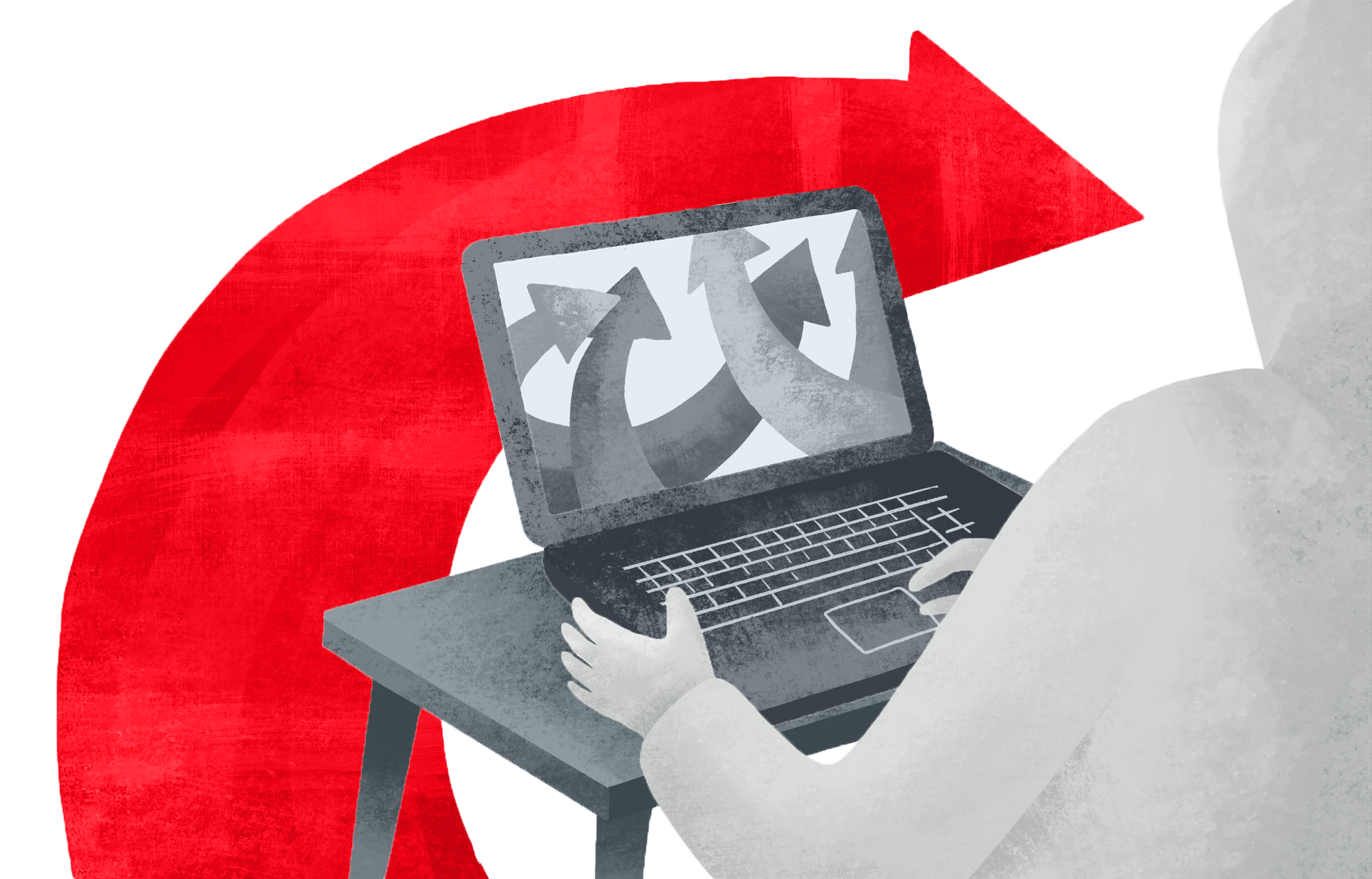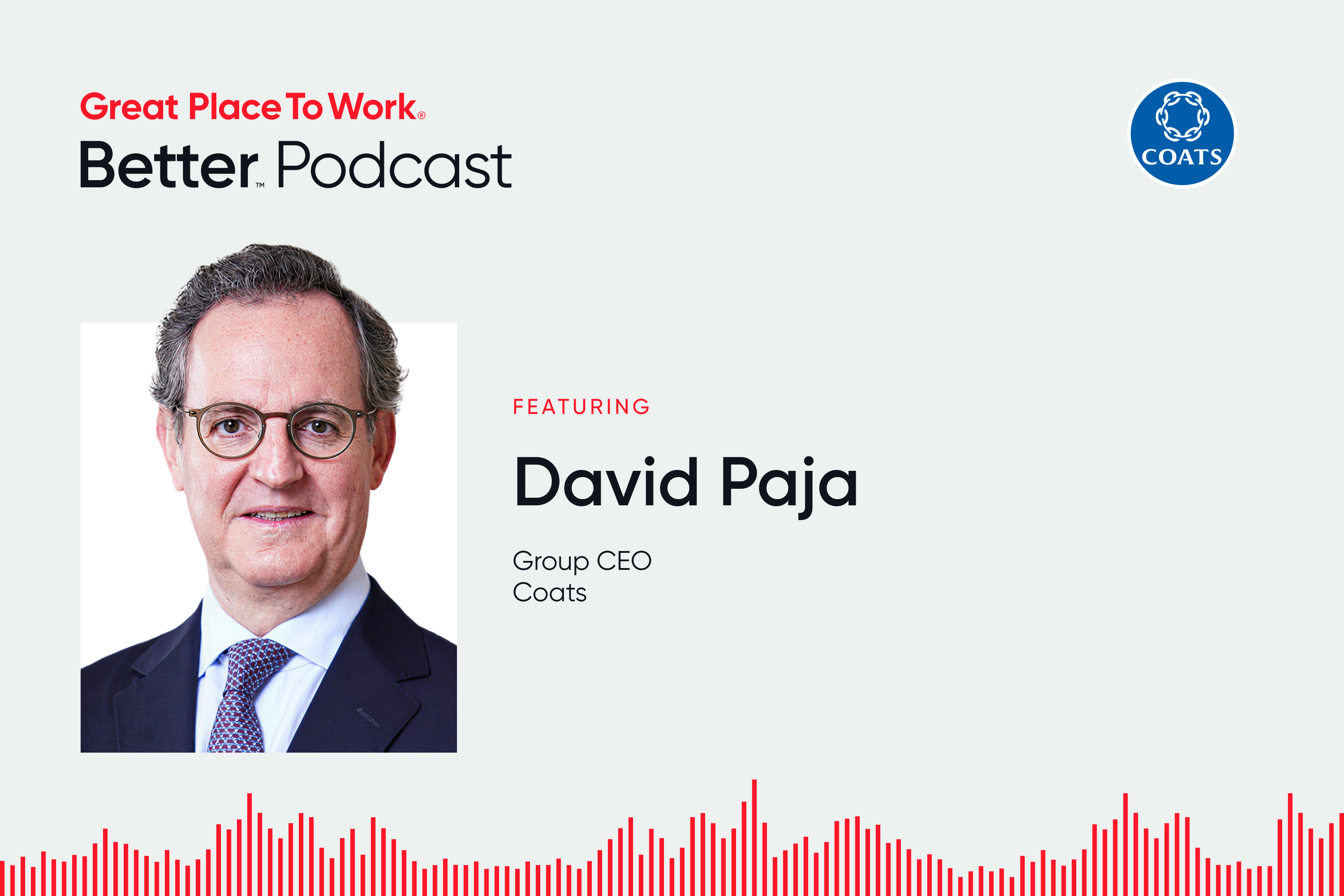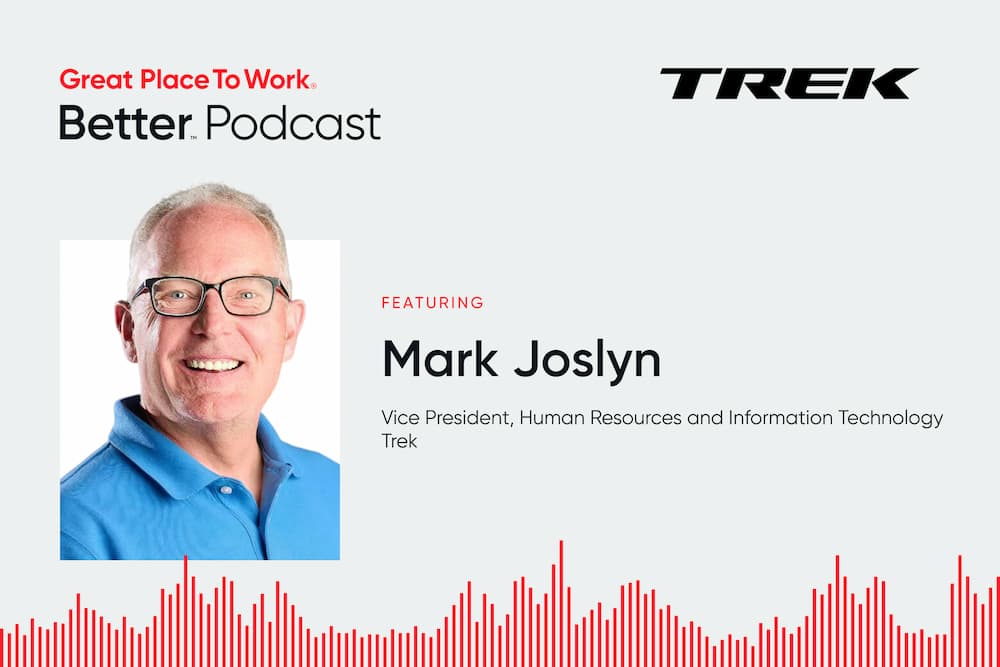Employee Experience, Employee Listening, Retention Strategies
Don’t let departing employees leave without asking them for feedback. Exit interviews are a critical tool for improving the employee experience — but they come too late to retain talent. Stay interviews, however, can help leaders prevent exits before they happen.
At Great Place To Work®, we talk a lot about the importance of measuring the employee experience through regular pulse surveys, but there’s one group many employers neglect: employees who leave.
Exit interviews are a critical piece of the offboarding process. When conducted thoughtfully and strategically, they can help you to better understand the employee experience.
However, they’re not a long-term solution to employee turnover. That’s why the best workplaces also use stay interviews — proactive conversations before an employee leaves — to learn what keeps employees engaged and what might push them away.
What are exit interviews and why are they important?
Exit interviews are a two-way conversation between an employer and an employee who has decided to leave the organization, with the goal of understanding that employee’s experience and their reasons for leaving. Interviews are typically arranged by HR but may include other leaders, depending on the situation.
For employees, they provide a platform to express their experiences, concerns, and suggestions, ensuring they leave on a positive note. This process can offer a sense of closure.
For organizations, exit interviews offer valuable insights into the reasons behind an employee’s departure and can help identify areas for improvement.
As an example, engineering and design firm Kimley-Horn — a member of the Fortune 100 Best Companies To Work For® since 2016 — uses exit interviews in addition to career check-ins and stay interviews to ensure it maintains pay equity.
Exit interviews matter — stay interviews matter more
While exit interviews are valuable, there’s one key challenge with them: they’re reactive, not proactive. Since exit interviews happen after an employee has already decided to leave, it’s too late to improve upon that employee’s experience.
That’s why leading organizations are turning to stay interviews. These are informal one-on-ones between managers and their direct reports, to better understand how employees feel about their role and the organization as a whole.
By prioritizing stay interviews, leaders can act early, build trust, and retain top talent before it’s too late.
Best practices for conducting effective exit interviews
While stay interviews can help you catch issues before an employee quits, the reality is that any organization will still have some degree of turnover.
As such, when an employee does leave, it’s important to put the same care and attention into the exit interview process as you would put into soliciting feedback from active employees.
Prepare with purposeful questions
Don’t go into an exit interview without a plan. You might not get the insights you’re looking for, and the employee may not get the closure they need.
Use a standardized set of questions to ensure consistency and comprehensiveness. By using the same base set of questions for each interview, you can then gather consistent data. Some examples of base questions include:
- What are your reasons for leaving?
- What were your experiences with leadership like?
- How would you describe your team’s dynamics?
A lot of exit interview questions may mirror statements in your employee engagement survey tool. You can then assess these comparable data points from both current and former employees for a more robust picture of your workplace’s employee experience.
While you want to have a plan, you can also leave time for open-ended comments, so the employee can express anything not addressed in the questions. You can also ask clarifying questions, but don’t pry or force an issue.
Listen thoughtfully to their feedback. Allow the employee to speak freely without interruption or judgment.
Create a safe and comfortable environment
With exit interviews, confidentiality is the number one priority. Ensure that the employee knows any information they share during the exit interview will remain confidential. This encourages the leaving employee to be candid and honest.
Have a neutral party, such as an HR representative, conduct the interview — rather than someone like a manager, who may be a reason behind the employee’s departure — to ensure objectivity and increase the employee’s sense of psychological safety.
Whether you do the interview in person or virtually, make sure it’s face-to-face. This enables more trust to be built, as both parties can read the other’s body language and spot other non-verbal cues.
Conduct the interview at the right time
Conduct the interview after the employee has formally resigned, but before their last working day. This will enable a more open conversation, and the employee can share their thoughts while they are still fresh.
Also, be aware that the employee may be busy wrapping things up during their last weeks or may be worried about having a candid conversation on-site. Offer them flexibility, such as the option to do it virtually or earlier or later in the day when the workplace is quieter.
Key questions to ask during an exit interview
Despite conducting regular pulse surveys and stay interviews, you may still have talent that decides to leave. The exit interview is your last chance to see what was missed in those check-ins.
You can tailor your exit interview questions to your organization, but you should ensure the following general focus areas are covered.
Motivation for leaving
Ask the employee about their reasons for leaving and if anything could have been done to retain them. These questions could look like:
- What prompted you to search for another opportunity?
- What could have been done to prevent your departure?
- What are you most excited about in your new role?
Work environment and culture
Inquire about the overall culture, leadership support, team dynamics, and communication within the organization. For example:
- How would you describe the company culture?
- Would you consider returning to this company in the future? Why or why not?
- What do you think we should know about your experience here?
Opportunities for growth and development
Explore whether the employee felt there were sufficient opportunities for career growth, professional development, and feedback. Questions could include:
- Do you feel your manager supported your success?
- Did you feel you had the necessary tools and resources to perform your job effectively?
- Did you receive sufficient feedback and in a way that supported you?
Job satisfaction and work-life balance
Finally, ask the employee about their satisfaction with job responsibilities, work-life balance, and any obstacles they faced that impacted their overall experience. Consider questions like:
- How were you supported to take care of your responsibilities at work and at home?
- How did our leaders model work-life balance (or work-life integration)?
- Were there any company policies or procedures that you found particularly helpful or problematic?
How to analyze and act on feedback from exit interviews
While no employer wants to see their employees leave, when they do, it’s important to collect, assess, and act upon the data.
Look for trends and patterns
Once an exit interview is completed, input the feedback into a secure, confidential data bank. You can then use this to systematically analyze what employees have said and identify trends and areas for improvement.
For example, you may note that challenges with leadership or dissatisfaction with compensation and benefits repeatedly come up as reasons for employees leaving.
These patterns may echo similar sentiments you’ve seen in your employee engagement survey tool or stay interviews, but you may also spot a new issue to start measuring among your current employees.
Use data to drive change
Use the insights you’ve gained to inform decisions on leadership development, workplace culture improvements, and talent management.
Pay special attention to themes and trends. These could be both strengths and opportunities.
For example, maybe former employees say that while they had a collaborative team, they didn’t see any opportunities for growth beyond their current role. Or perhaps the compensation was great, but unrealistic deadlines were harming their work-life balance.
What insights can you use to improve your workplace experience?
Close the feedback loop
Cross-check any themes you’ve identified within your current staff — both leaders and employees.
On the employee side, you want to retain the employees you have and address any pressing issues or low-hanging fruit with urgency and attention. If one employee left because of a specific issue within your organization, there’s a good chance others may feel the same way.
On the management side, by providing useful data to the leadership team, your organization can take actionable steps to address identified areas of improvement.
Train leaders to lead flexibly
Collecting employee feedback through exit interviews, stay interviews, and pulse surveys can and should lead to consistent changes and improvements in the workplace.
As such, leaders need to be flexible and adapt whenever new feedback leads to new initiatives.
Provide resources to help leaders navigate these changing expectations. This might include:
- Practical workshops on flexible leadership styles
- One-on-one coaching sessions
- Guidelines for making fair decisions
Encourage leaders to maintain regular check-ins and create environments where team members feel comfortable voicing concerns, so that you can address issues before they become resignation reasons.
The impact of exit interviews on employee retention and organizational culture
Exit interviews are a vital tool for gathering actionable feedback from departing employees. When done right, they provide valuable insights into workplace culture, leadership effectiveness, and employee satisfaction.
But here’s the catch: By the time you’re conducting an exit interview, you’ve already lost that employee and likely missed multiple opportunities to address their concerns.
Forward-thinking organizations don’t just excel at exit interviews — they’ve mastered the art of the stay interview. These conversations happen while employees are still invested, so that instead of learning why someone left, you discover what will make them stay.
While exit interviews can help you understand what went wrong, stay interviews help you get it right from the start.
Ready to get ahead of turnover? Learn how to implement effective stay interviews that keep your best talent engaged, or check out Great Place To Work’s employee surveys to help ensure a consistently great experience for your employees so that they stay and thrive in your business.
Turn culture insights into business wins
Let the Trust Index™ Survey reveal your workplace’s hidden strengths and areas for growth. Start transforming today.











